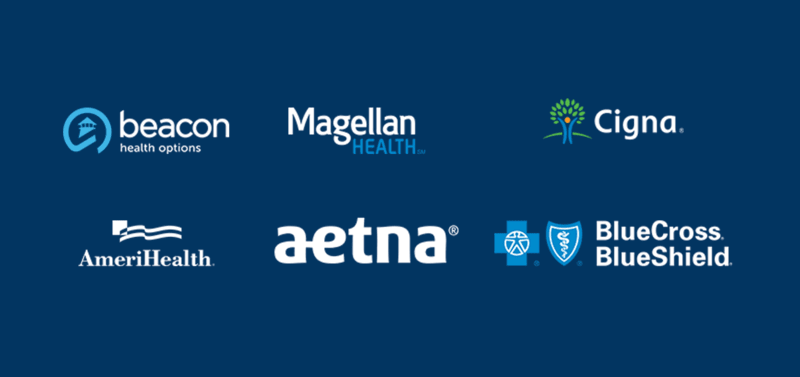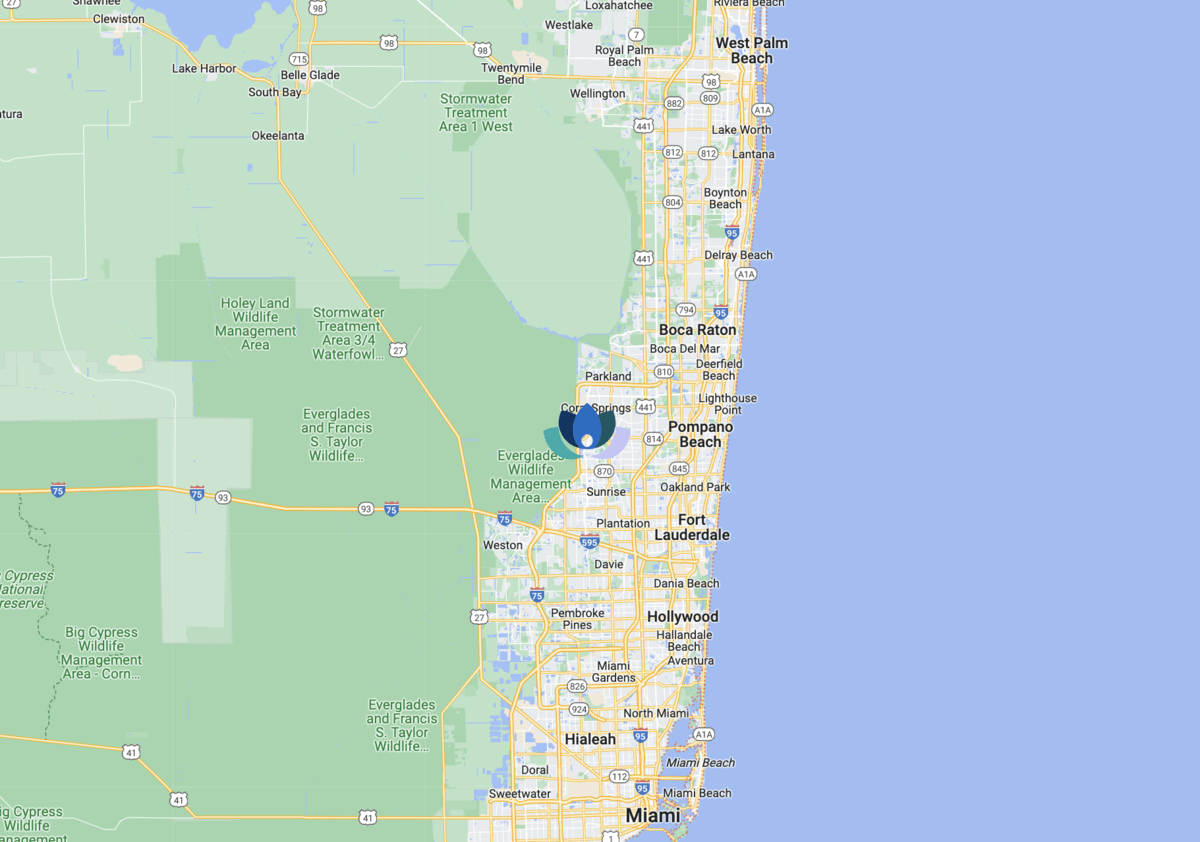Eating disorders and mental health go hand in hand. Not only is an eating disorder a mental health issue, these conditions often co-occur with other psychiatric issues. For example, anxiety and eating disorders are common comorbid conditions. The Sylvia Brafman Mental Health Center uses decades of clinical experience to address the complex intersection of mental health and eating disorders.

Dual Diagnosis Mental Health and Eating Disorder Treatment Center in Fort Lauderdale, Florida
What is an Eating Disorder?
An eating disorder is a serious mental health condition involving your relationship with food and body image issues that impact overall well-being. It goes beyond dieting or unhealthy eating habits. Patterns of restrictive eating, bingeing, purging, or excessive concern about weight and shape characterize mental health eating disorders, often leading to physical and emotional consequences without comprehensive mental health treatment.
If you’re struggling with an eating disorder, you’re not alone, and help is available. Conditions like anorexia, bulimia, and binge-eating disorder often stem from a mix of genetic, psychological, and environmental factors. Recovery is possible with the right support, including integrated mental health care and nutrition therapy, eating disorder recovery programs, and medical care tailored to your needs. Seeking help is vital to healing and regaining control over your emotional health and eating habits.

What Are Different Types of Eating Disorders
Eating disorders come in different forms, each affecting how you think about food, body image, and health. While no two experiences are the same, certain patterns and behaviors define specific conditions. Below are some common types of eating disorders mental health treatment can address, but this isn’t a complete list—each person’s struggle is unique, and variations exist.

What is a Dual Diagnosis Mental Health and Eating Disorder?
A dual diagnosis refers to when someone is dealing with both an eating disorder and another mental health issue, such as depression, anxiety, or trauma. Eating disorders and mental health issues often go hand in hand, with one condition exacerbating the other. For example, co-occurring trauma and eating disorders can lead to unhealthy coping mechanisms like disordered eating.
Co-occurring conditions must be addressed simultaneously for successful recovery. Seeking care at a dual diagnosis treatment center can offer holistic mental health care methodologies, providing specialized support for challenges like depression and disordered eating. Treatment may involve therapy, medical support, and nutritional counseling to address all aspects of dual diagnosis eating disorders. Dual-diagnosis eating disorder treatment centers in Fort Lauderdale, like The Sylvia Brafman Mental Health Center, provide integrated care that tackles both issues simultaneously, providing the most effective path to healing and recovery. Call 877-958-9212 to learn more about what we treat.
What Are Signs and Symptoms of Eating Disorders and Mental Health?
Recognizing the signs of mental health and eating disorder struggles can help you or someone you care about get the necessary support. Eating disorders don’t just affect physical health—they also have a profound impact on mental and emotional well-being. Many people with eating disorders experience anxiety, depression, or obsessive thoughts about food, body image, and control.
If you’re worried about yourself or a loved one, paying attention to the warning signs is an important first step. Recognizing the signs of eating disorders and mental health challenges can be the first step to a healthier future. Below are some common warning signs, along with detailed descriptions of what to look for:
- Drastic Changes in Eating Habits – Skipping meals, eating very little, binge eating large amounts of food in a short period, or developing strict food rules can all indicate an eating disorder. Someone may become obsessed with counting calories, avoiding entire food groups, or eating secretly.
- Preoccupation with Food, Weight, and Body Image – Constant thoughts about food, dieting, or body shape can take over daily life. People may frequently check their appearance in the mirror, weigh themselves excessively, or express extreme dissatisfaction with their bodies, even if others reassure them.
- Extreme Weight Fluctuations – Rapid weight loss or gain can indicate restrictive eating, binge eating, or purging behaviors. While not everyone with an eating disorder experiences dramatic weight changes, any sudden or unexplained shifts can be a red flag.
- Excessive Exercise – Engaging in intense workouts, even when feeling sick, injured, or exhausted, can indicate an unhealthy relationship with exercise. A person may feel guilty or anxious if they miss a workout, prioritizing exercise over social activities or responsibilities.
- Mood Changes and Emotional Distress – Anxiety, depression, irritability, or mood swings often accompany eating disorders. Someone struggling may feel overwhelmed by guilt or shame about eating, experience low self-esteem, or become withdrawn from friends and family.
- Physical Health Issues – Fatigue, dizziness, fainting, hair thinning, digestive problems, and irregular menstrual cycles (for those who menstruate) can be physical consequences of disordered eating. Malnutrition and dehydration may also lead to serious health risks.
- Social Withdrawal and Isolation – Avoiding meals with others, making excuses to eat alone, or skipping social events to hide eating behaviors are common warning signs. People may also become secretive about their eating habits, refusing to discuss their relationship with food.
If you or someone you know is experiencing these telltale symptoms, seeking professional support is essential. Eating disorders and mental health issues are treatable, and early intervention can make a significant difference. You don’t have to go it alone—help is available.
What Types of Treatment Programs for Mental Health and Eating Disorders are Available in Fort Lauderdale, Florida?
Dual-diagnosis eating disorder treatment centers in Fort Lauderdale specialize in psychological treatment for eating disorders and accompanying mental health issues, providing a holistic approach to recovery. If you or a loved one are seeking support for eating disorders and co-occurring mental health conditions, comprehensive mental health treatment and program options are available.

Therapy and Counseling Options for Mental Health and Eating Disorders
Finding the right therapy and counseling options for mental health and eating disorders can help you develop healthier coping strategies, improve your relationship with food, and address underlying emotional challenges. Below are just a few examples of the options available—this is not a complete list, and the best approach for you will depend on your unique needs.

Does Health Insurance Cover Mental Health and Eating Disorder Treatment in Florida?
Yes, health insurance in Florida typically covers mental health and eating disorder treatment, but coverage can vary depending on your plan. To ensure you’re covered for specific services, check your insurance details, including coverage for outpatient treatment centers or inpatient therapy clinics. You’ll also want to confirm coverage for other treatment options like nutritional counseling and medical management.
To get the most accurate information, contact your insurer or a healthcare provider like the helpful patient advocates at The Sylvia Brafman Mental Health Center. We can confirm which services are included, as well as any potential out-of-pocket costs, and answer any questions you may have. This will help you understand your options and avoid unexpected expenses.
Which Health Insurance Providers Cover MH and ED in Florida?
Many major health insurance providers in Florida offer coverage for mental health and eating disorder treatment, but the specifics can vary depending on your plan. Some of the larger health insurance companies that commonly cover these services include Florida Blue, UnitedHealthcare, Aetna, and the New York State Health Insurance Program (NYSHIP).
Each provider offers different levels of coverage, so review your specific policy for details. To ensure you have the coverage you need, contact your insurance provider or Sylvia Brafman and ask about the specifics of your plan. You can verify if there are in-network rehabilitation centers for mental health and eating disorders in your area. This will help you make an informed decision about your treatment options and avoid unexpected out-of-pocket costs.

How to Find a Mental Health and Eating Disorder Treatment Center Near Me
If you’re struggling with mental health and eating disorders, finding the right treatment center can be a life-changing decision. If you’re in Florida or considering out-of-state care, The Sylvia Brafman Mental Health Center is an accredited and trusted option that regularly accepts patients outside the Sunshine State. We offer comprehensive eating disorder recovery programs with a focus on individualized care.
Call 877-958-9212 or visit us at 7710 NW 71st Ct, Tamarac, FL 33321.
The following is a step-by-step guide to help you find a mental health and eating disorder recovery center that suits your needs and preferences:

What is the Admissions Process for a Mental Health and Eating Disorder Treatment Program?
The admissions process for a mental health and eating disorder treatment program is a carefully structured process that ensures that you or your loved one receives the most appropriate and effective care. Seeking treatment for these conditions is a big step, and the admissions process guides you through each phase, from initial contact to admission and beyond.
Here’s a brief overview of the typical steps involved:
Initial Contact and Inquiry: The process begins when you contact the treatment center to express interest in their services. During this step, you can ask questions about the program, discuss your concerns, and gather information about what they offer. This is often when you’ll speak with an intake coordinator who will guide you through the next steps.
Intake Assessment: Once you decide to proceed, an intake assessment is scheduled. This typically involves a detailed conversation with a clinician or intake specialist who will gather information about your medical history, current mental health, eating disorder symptoms, and any co-occurring conditions. The goal is to understand your needs and ensure the program is a good fit.
Evaluation and Diagnosis: A thorough evaluation is conducted after the intake assessment. This may involve additional assessments, interviews, and sometimes psychological testing to help diagnose any mental health or eating disorder conditions you may be facing. This step is crucial in determining the proper course of treatment.
Development of Personalized Treatment Plan: A personalized treatment plan is created based on the evaluation and diagnosis. This plan outlines the specific therapies, medical interventions, and support you’ll receive throughout your program. It may include individual therapy, group therapy, nutritional counseling, and more, depending on your unique needs.
Insurance Verification and Financial Counseling: The next step involves verifying your insurance to determine coverage and any out-of-pocket costs. If you don’t have insurance or need additional support, financial counseling will be offered to help you understand payment options and potential assistance.
Admission Approval: Once all information has been reviewed and treatment plans are in place, you’ll receive admission approval. This confirms that you’re eligible to enter the program and that the treatment center is prepared to meet your needs.
Family Orientation: Many treatment centers offer a family orientation to help your loved ones understand the treatment process and how they can best support you. This may include an introduction to the treatment team, program expectations, and communication guidelines during your stay.
Admittance to the Program: After orientation, you’ll officially be admitted. This step includes completing any remaining paperwork and preparing for your stay, whether it’s outpatient or residential eating disorder treatment. You’ll meet with your treatment team and begin your individualized treatment plan.
Ongoing Monitoring and Adjustments: Throughout your treatment, your plan’s progress is regularly monitored. Adjustments are made to ensure you receive the most effective care. This includes continuous check-ins with your treatment team to address new or changing concerns.
Are There Free and Confidential Mental Health and Eating Disorder Tests and Assessments in Florida?
Yes, there are free and confidential mental health and eating disorder tests and assessments available in Florida. Many treatment centers, including The Sylvia Brafman Mental Health Center, offer free initial assessments to help you understand whether you or your loved one may be struggling with mental health or eating disorder concerns.
These assessments are typically conducted by trained professionals who use standardized tools to evaluate symptoms and identify areas of need. The results can provide valuable insight into the next steps in the treatment process. If you would like to schedule an assessment, you can contact us directly at 877-958-9212. Our confidential, professional evaluations help you or your loved one determine the appropriate level of care and support. Reach out today to get started on the path to recovery.
How Much Does a Mental Health and Eating Disorder Treatment Program Cost in Fort Lauderdale, Florida?
The cost of a mental health and eating disorder treatment program in Fort Lauderdale, Florida, can vary depending on the type of care needed, the specific treatment center, and whether you have insurance coverage. On average, inpatient care can range from $1,000 to $2,500 per day, while outpatient programs typically cost between $100 to $500 per session.
It’s important to check with individual treatment centers about their fee structure and payment options. Many centers, like The Sylvia Brafman Mental Health Center, offer financial counseling. Our patient advocates can help you understand your insurance coverage and potential out-of-pocket costs and discuss payment plans. Exploring all available options ensures that you can find a mental health and eating disorder recovery program that fits your needs and budget.



